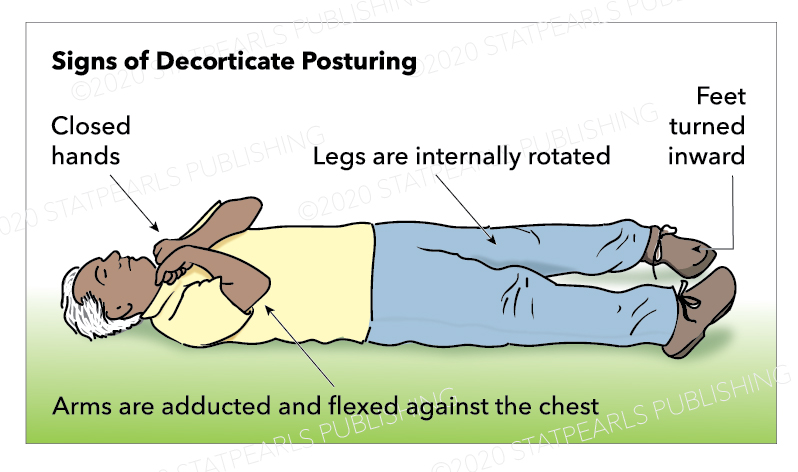| |
Decorticate Posturing After Cardiac Arrest
Notice also the decorticate posturing of the upper body suggesting neurological dysfunction.
Decorticate posturing after cardiac arrest. On the 17th day of this treatment after rewarming 35 5 c and. Decerebrate posturing is extension of the upper and lower limbs associated with a lesion at the level. On the 17th day of this treatment after rewarming 35 5 degrees c and discontinuation of the barbiturate the patient responded to command.
When the patient developed a characteristic decorticate posture mild hypothermia oesophageal temperature 33 34 c was induced. Sir charles sherrington was first to describe decerebrate posturing after transecting the brain stems of cats and monkeys causing them to exhibit the posturing. Decorticate posturing a sign of severe damage to the brain is a specific type of involuntary abnormal posturing of a person.
Decorticate posture is stiff with legs held out straight fists. However regardless of the cause or duration of. The reversibility of this state which is considered to be very critical and hardly reversible depends upon the origin of the brainstem dysfunction.
Absence of babinski reflex d. In the patient watch the spastic gulping movements of the mouth and tongue. This is agonal breathing.
Weaning from the ventilator was successful on the 18th day. Normally people displaying decerebrate or decorticate posturing are in a coma and have poor prognoses with risks for cardiac arrhythmia or arrest and respiratory failure. As for the compressions nowadays we would like to see them faster and deeper with fewer and briefer pauses.
When the patient developed a characteristic decorticate posture mild hypothermia oesophageal temperature 33 34 degrees c was induced. List of 70 causes for cardiac arrest and decerebrate posturing alternative diagnoses rare causes misdiagnoses patient stories and much more. The decerebrate posturing is a sign of major brainstem dysfunction.
Source : pinterest.com

